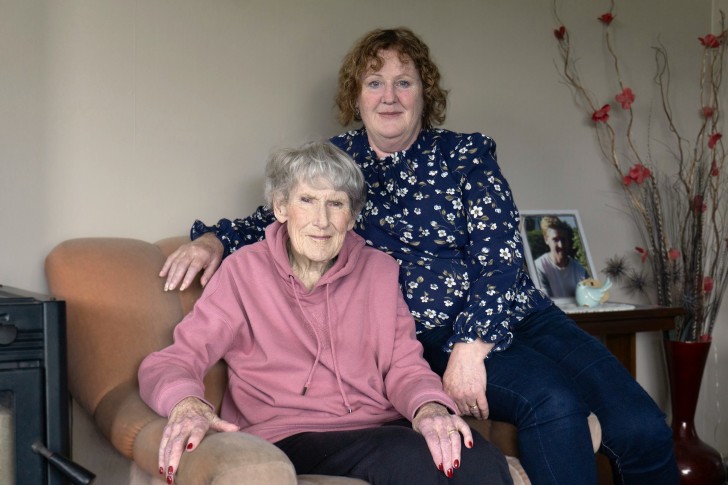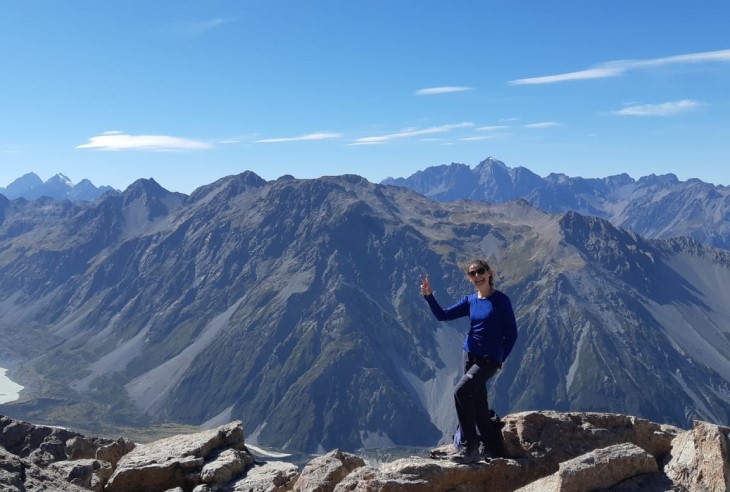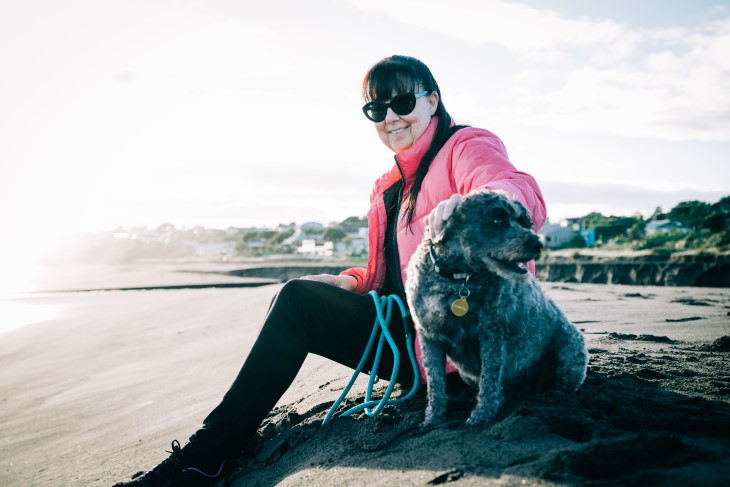Mother and daughter navigate osteoporosis

Mother and daughter Marilyn Chettleburgh and Linda Dingley are sharing their story to raise awareness of osteoporosis. ACC invests in the Fracture Liaison Service, which helps those who’ve suffered fractures regain their independence.
Linda Dingley is looking forward to becoming a grandparent for the first time while Marilyn Chettleburgh is a great grandparent for the seventh time.
Family is what’s most important to the Dunedin-based mother and daughter, and creating more special memories with their family is what’s driving them to prioritise their bone health.
Marilyn, aged 79, was diagnosed with osteoporosis 15 years ago.
Linda, 58, only received her diagnosis a couple of months ago.
“It was just by chance,” Linda says.
“I was on the phone to the WellSouth Fracture Liaison Service to check on mum’s progress when I mentioned I’d fallen and broken my wrist.
“I was referred for a DEXA [bone density] scan, which confirmed I had osteoporosis.”
Linda didn’t think she’d ever be at risk of the bone density disease.
“I knew mum and my aunty had it, but I never thought it would happen to me.”
The silent disease
Osteoporosis is often referred to as the silent disease because bone density loss occurs without any symptoms.
But there are known risk factors, including age, genetics and lifestyle choices. People may be more at risk if they have a family history of osteoporosis, a personal history of fragility fractures or falls, have completed menopause (especially if before 45), are a woman over 50 or a male over 65.
“If I’d have known having a family history of osteoporosis put me in a higher-risk category, I might have taken a few more precautions,” Linda says.
“It was the end of June when I fell and broke my right wrist while walking my dog. It took months of pain, frustration and little improvement before someone questioned why it was taking my wrist so long to recover.”
On the other hand, Marilyn went most of her life without breaking a single bone.
It was after an unsuccessful arthroscopy on her knee that she was referred for a DEXA scan and subsequently diagnosed with osteoporosis.
Marilyn was walking with her grandson in March last year when she tripped on a plant and had her first serious fall, breaking a bone in her neck.
Then she fell again in May this year. She was putting some wood on the fire when she turned too quickly and caught her slipper, this time falling and fracturing her pelvis.
Fracture Liaison Service provides vital support
Following the second fracture, Marilyn was picked up by the team at WellSouth Fracture Liaison Service.
The service identifies all patients over 50 who’ve suffered a fragility fracture, performs a fracture risk assessment and, if required, provides treatment for osteoporosis. The aim is to reduce the risk of subsequent fractures.
Osteoporosis cannot be cured, but it can be managed, and its progression can be slowed with appropriate treatment and lifestyle changes.
That’s now Linda and Marilyn’s focus, as they look forward to welcoming a grandchild and great grandchild in the new year.
“For a while I wasn’t very active,” Marilyn says.
“But when I’m active, I feel better. You don’t realise when you’re younger what’s going to be ahead of you if you don’t look after your bones.”
Marilyn’s pelvis injury has stopped her from driving, but Linda visits regularly and takes her mum out for a coffee or a drive somewhere.
“I’m very lucky to have Linda. She’s my daughter, but also my friend,” Marilyn says.
Marilyn has exercises to support with her recovery and ACC has assisted with other supports like home care.
Linda is a sterile technician at Dunedin Hospital. She’s been back at work for about a month on modified duties and reduced hours.
“I have to be mindful of what I’m doing,” Linda says.
“I’m not able to do any of the heavy lifting, but it’s good to be back at work. I said to everyone when I first came back, ‘God, I missed you guys.’ I’ve known some of them for over 20 years.”

World Osteoporosis Awareness Day
World Osteoporosis Awareness Day is celebrated on 20 October.
Linda says it’s a great opportunity to raise awareness about bone health.
“I’m very much like mum, we’ve both always liked to look after other people,” she says.
“You just can’t take your own health for granted.”
One in three women and one in five men will suffer an osteoporotic fracture in their lifetime, says Osteoporosis New Zealand Executive Director John Mulka.
“An estimated 22,300 fragility fractures occur annually,” John says.
“These injuries result in over 191,000 hospital bed days annually – equal to an average of 525 hospital beds being occupied every day by fragility fracture patients – with hip fractures alone costing an estimated $210 million to ACC and the health system.”
ACC partners with Osteoporosis New Zealand to reduce the risk of secondary fragility fractures through the Fracture Liaison Service (FLS) and the NZ Fragility Fracture Registry (NZFFR).
ACC helps reduce falls risk and improve wellbeing
ACC’s investment in Fracture Liaison Services is helping New Zealanders who have experienced osteoporosis-related fractures to regain independence, reduce the risk of future injury and improve overall wellbeing, ACC Injury Prevention Leader James Whitaker says.
This investment forms part of the broader Live Stronger for Longer (LSFL) programme, which was independently reviewed by ImpactLab and recognised for its significant impact on the lives of older people across New Zealand, James says.
“For every dollar invested in LSFL between July 2022 and December 2023, the programme delivered a social return of $5.20 – one of the highest value outcomes ImpactLab has recorded,” James says.
In 2024, ACC accepted nearly 204,000 claims for falls and fracture-related injuries among people aged 65 and over, costing over $494 million.
Falls are the most common cause of injury in New Zealand, accounting for nearly 40 per cent of all ACC claims.
“Many people think falling is part of the ageing process, but the good news is most falls are preventable,” James says.
“Early detection, bone health management and fall prevention strategies are key to reducing the incidence and severity of fragility fractures, particularly in older adults.
“You’re never too young or old to take steps to improve your bone health and reduce your chance of getting osteoporosis. In fact, adolescence presents the greatest window of opportunity to build bone density and create positive effects that can last a lifetime.
“Engaging in a wide range of sports and physical activities at any age is beneficial for bone health and it’s never too late to start.
“No need to stress though if adolescence is a distant memory – research shows regular strength and balance training is a highly-effective, evidence-based intervention that reduces the risk of falls by almost a third.”
More info on osteoporosis
Visit Osteoporosis New Zealand to take the Know Your Bones test and for additional tips on bone health.
ACC’s Live Stronger for Longer (LSFL) programme helps older adults stay active. Visit the Live Stronger website to Find a Strength and Balance class or download the Nymbl app.





